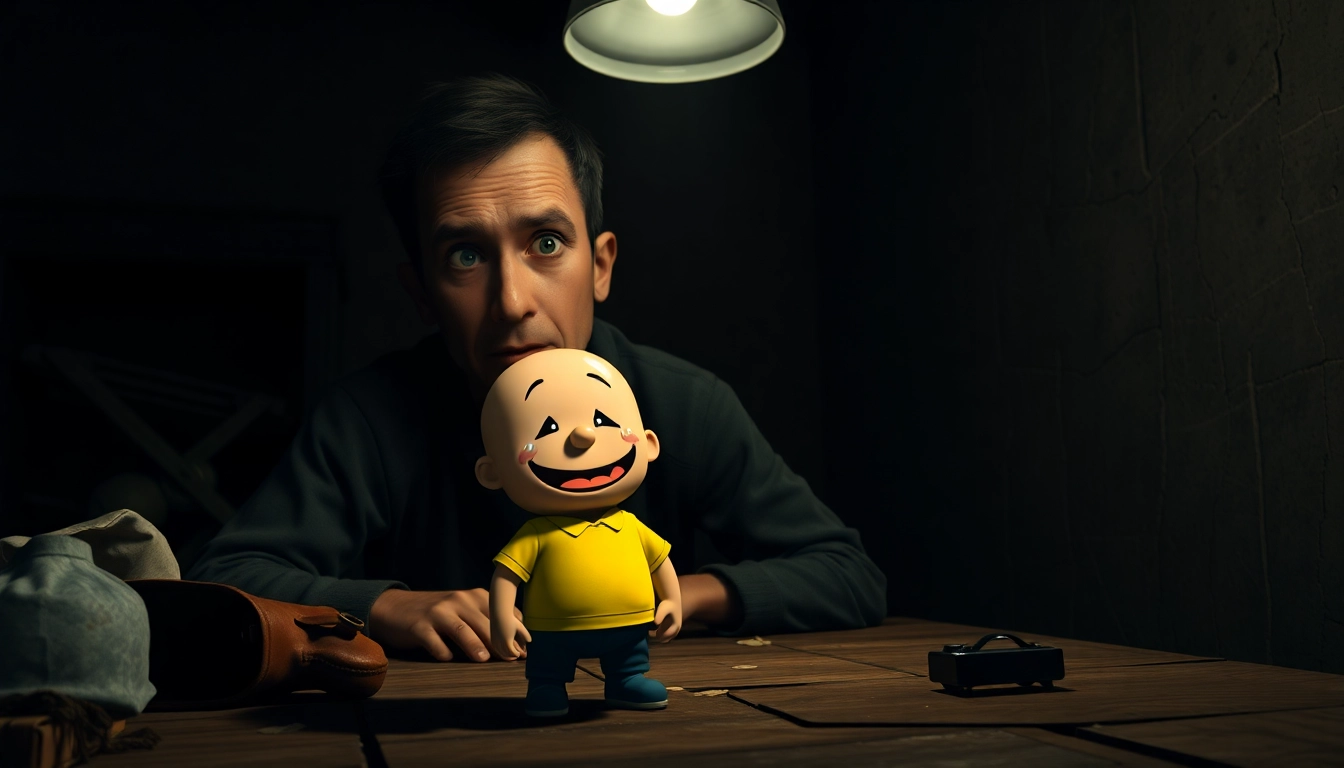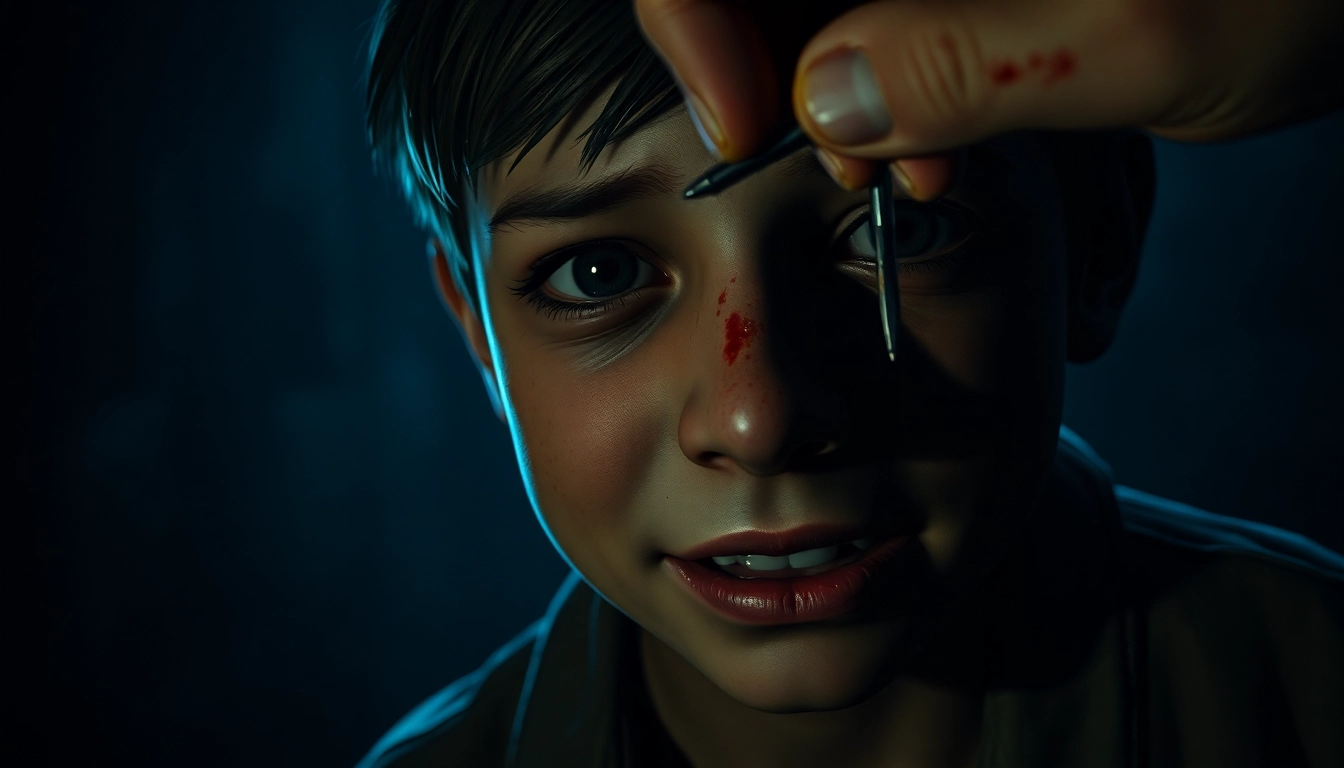Overview and Context: BloodMoney — A Psychological Horror Clicker Game
In the realm of psychological horror games, few titles manage to evoke such a profound sense of moral conflict and visceral discomfort as bloodmoney. This dark clicker game immerses players into a disturbing narrative where each interaction not only yields monetary gain but also deepens Harvey’s suffering, challenging players to confront their own ethical boundaries. BloodMoney stands out in the indie horror genre for its innovative mechanics, psychological depth, and unflinching portrayal of human morality under duress. As you navigate Harvey’s twisted world, you are invited to explore how far you are willing to go when survival hinges on morally questionable choices, making it a compelling, if unsettling, experience for fans of dark storytelling and psychological horror.
The Dark Narrative of BloodMoney and Harvey’s Role
The core of BloodMoney revolves around Harvey, a seemingly cheerful character who becomes the focal point of a harrowing moral experiment. Diagnosed with a severe medical condition that requires an urgent $25,000 for treatment, the protagonist faces a life-or-death dilemma. A mysterious figure presents an unusual solution: clicking on Harvey to generate money. Initially, Harvey appears as an innocent, helpful figure, eager to assist. However, as the game progresses, it becomes clear that each click inflicts pain on Harvey, who is oblivious or possibly powerless to stop the suffering. This duality—the innocence of Harvey and the sinister nature of the shop—creates a layered narrative that questions the morality of profit at any cost. The game masterfully uses this setup to explore themes of exploitation, innocence, and human depravity, forcing players to question whether the pursuit of survival justifies the means.
Gameplay Mechanics and Moral Choices
Clicking Mechanics and Profit Generation
At its core, BloodMoney is a clicker game: players repeatedly click on Harvey to accumulate money. Each click boosts your total funds, bringing you closer to the critical $25,000 needed for medical bills. Initially, clicking seems harmless and even humorous, but as the game progresses, the visual and emotional toll on Harvey becomes more apparent. The more you click, the more Harvey endures pain, and the more disturbing the visuals become—progressively revealing injuries, bruises, and expressions of distress. This mechanic underscores the game’s central moral dilemma: the more you click, the faster your financial goal is achieved, but at what moral cost?
Upgrade System and Increasingly Unsettling Tools
To accelerate your progress, players can purchase upgrades from the in-game shop. These upgrades range from simple items like needles and scissors to more violent tools such as hammers and blades. Each purchase enhances earning potential but amplifies Harvey’s suffering. Visual cues intensify as Harvey’s reactions grow more pain-stricken, with some upgrades causing visible injuries or emotional distress. The upgrade system introduces a risk-reward dynamic: the more violent and aggressive your tools, the quicker you reach your goal, but at the expense of Harvey’s well-being and the player’s moral integrity. This tension underscores the game’s commentary on the ethics of profit and the extent to which individuals are willing to compromise their morals for survival.
Visual and Psychological Impact: Creating an Unsettling Atmosphere
BloodMoney excels in crafting an atmosphere of psychological horror through subtle visual cues and dialogue. As the player continues clicking and upgrading, Harvey’s appearance gradually deteriorates—bruises deepen, expressions of pain become more prominent, and his demeanor shifts from cheerful to distressed. The game employs minimalist yet effective visuals, with muted colors and stark imagery that evoke discomfort and unease. Dialogue from Harvey becomes increasingly desperate, reflecting his confusion and suffering, which amplifies the emotional impact. The game’s sound design, with unsettling ambient noises and distorted effects, further immerses players in a world where morality is blurred, and every action has consequences that linger beneath the surface.
The Ethical Dilemma: Profit Versus Human Suffering
At its essence, BloodMoney is a profound exploration of moral boundaries. The player is faced with a harrowing choice: to minimize Harvey’s pain and suffering, thereby perhaps prolonging the process of reaching the financial goal, or to sacrifice Harvey’s well-being entirely for faster profit. The game presents a spectrum of options, from gentle tools like pillows to brutal weapons like hammers, each with different implications for Harvey’s suffering and the final outcome. This stark dichotomy forces players to confront uncomfortable questions: How much suffering is acceptable if it means saving oneself? Is profit worth the moral cost? Or does the pursuit of survival reveal inherent darkness within human nature? These questions resonate deeply, making each playthrough a unique moral experiment.
Multiple Endings and Their Moral Significance
The Good Ending
The path to the Good Ending involves choosing the least violent options, such as using pillows or scissors, and attempting to minimize Harvey’s suffering throughout the game. Achieving this ending requires careful restraint and moral consideration, ultimately leading to a conclusion where Harvey survives with the least amount of pain inflicted. This ending symbolizes moral integrity, emphasizing that even in desperate situations, compassion and restraint are possible.
The Normal Ending
The Normal Ending is attainable through moderate violence—using tools like scissors or the needle—without completely disregarding Harvey’s suffering. It reflects a pragmatic approach where the player balances profit with some moral compromise. Harvey’s fate in this scenario is less sympathetic but still not as brutal as the Bad Ending, offering a nuanced perspective on moral trade-offs.
The Bad Ending
The Bad Ending is achieved by maximizing violence and efficiency, using the most brutal tools like hammers and blades, regardless of Harvey’s suffering. This path results in Harvey’s ultimate demise—either physically or emotionally—and portrays the player’s descent into moral darkness. The ending serves as a stark warning about unchecked greed and cruelty, illustrating how moral decay can be a consequence of relentless pursuit of self-interest.
Community Insights and Player Reactions
BloodMoney has garnered a dedicated community of players who analyze its mechanics and moral themes extensively. Many players share their experiences, noting how the game’s subtle cues—like Harvey’s reactions or dialogue—guide their decision-making. Observant players have discovered that Harvey’s reactions sometimes reveal he is unaware of the true nature of the shop’s tools, especially when surprised by more violent weapons. This suggests that Harvey might be a pawn or an unwitting participant, adding an extra layer of moral ambiguity. Player reactions often highlight the emotional impact of the game, with many reporting feelings of guilt, empathy, and reflection after their playthroughs. The game’s capacity to evoke genuine emotional responses makes it a potent tool for exploring human morality and the dark side of desperation.
The Game’s Reflection on Human Nature and Morality
BloodMoney’s narrative and gameplay mechanics serve as a mirror to real-world ethical dilemmas. It explores whether humans are inherently good or evil, especially when faced with life-threatening situations. Harvey embodies innocence and vulnerability, yet the game’s shop and upgrade system tempt players toward violence and exploitation. This duality questions whether moral integrity can survive under extreme stress or if darkness is an intrinsic part of human nature. The game subtly suggests that within us all lies a potential for both compassion and cruelty, and that circumstances can tip the moral balance in unpredictable ways. It challenges players to consider their own values and the lengths they might go to in order to survive—a reflection that is both uncomfortable and profoundly thought-provoking.
Comparing BloodMoney to Other Psychological Horror Games
While many psychological horror games focus on narrative horror, atmospheric tension, or survival mechanics, BloodMoney distinguishes itself through its dark humor intertwined with moral inquiry. Unlike titles that rely solely on jump scares or gore, it employs minimalist visuals and subtle cues to evoke emotional and moral responses. Its clicker mechanics make it accessible yet deeply unsettling, encouraging repeated playthroughs to explore different moral choices and outcomes. Compared to other indie horror games like “Don’t Forget” or “Soma,” BloodMoney emphasizes moral complexity and psychological discomfort over pure horror or action. Its unique blend of gameplay and storytelling makes it a compelling case study in how games can serve as ethical mirror and social commentary.
Final Thoughts: When Survival Meets Morality in Gaming
BloodMoney challenges players to confront the uncomfortable truth about human morality. It demonstrates how desperation can push individuals toward morally reprehensible actions and questions whether survival justifies such choices. The game’s multiple endings serve as a reflection of the player’s moral stance—whether one chooses restraint, moderate violence, or unrestrained brutality. Ultimately, BloodMoney is more than a game; it is a psychological experiment that explores the depths of human nature, morality, and the cost of survival. As you navigate its disturbing landscape, you are invited to reflect on your own values and the thin line separating good from evil.
For those intrigued by the moral dilemmas presented in BloodMoney, exploring the bloodmoney experience offers an intense journey into the darkest recesses of the human psyche. Will you choose to act with compassion, or succumb to greed and brutality? The answer lies within your choices—each click revealing not only Harvey’s suffering but also the shadowy corners of your own morality.

